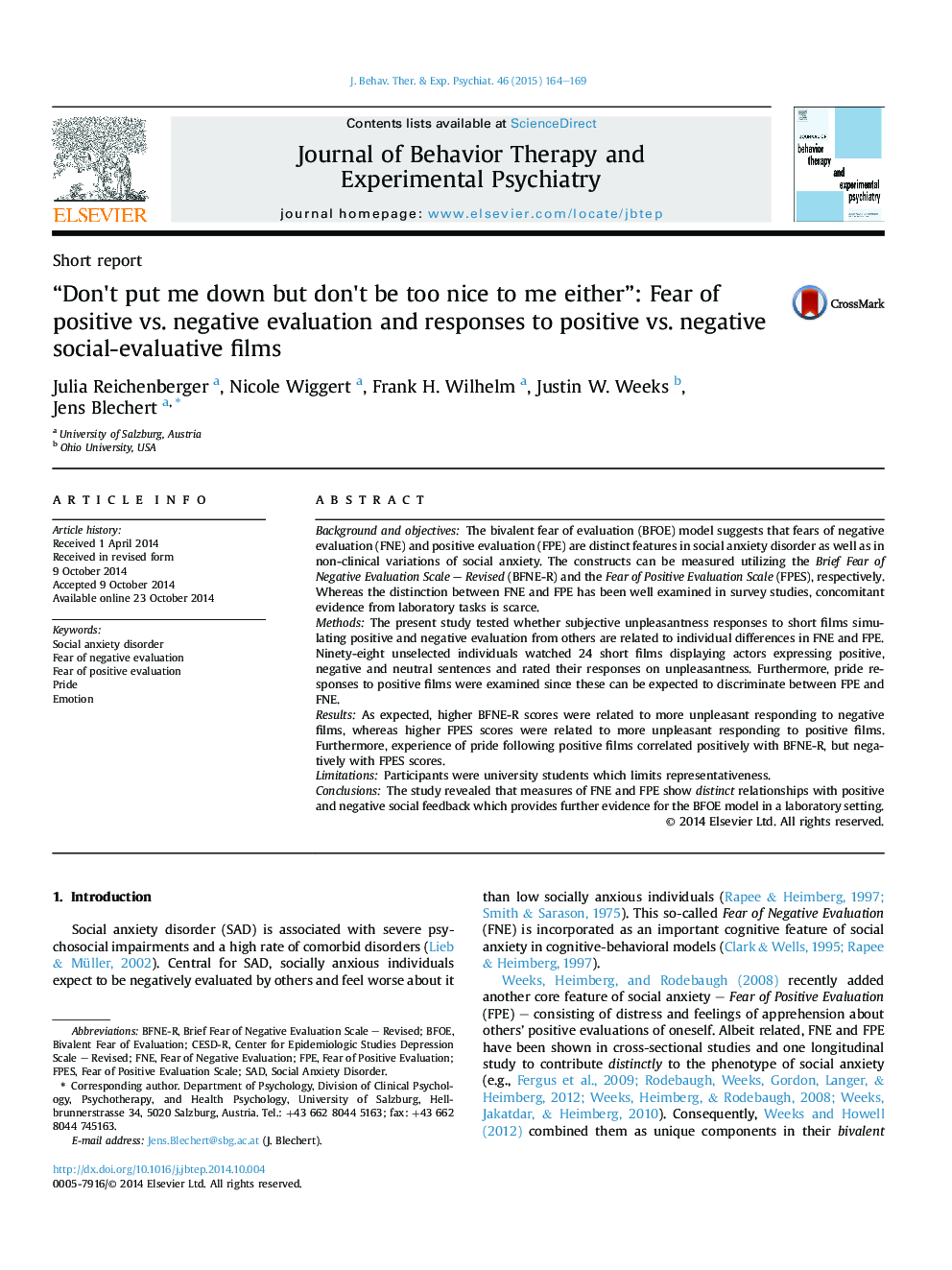| Article ID | Journal | Published Year | Pages | File Type |
|---|---|---|---|---|
| 910364 | Journal of Behavior Therapy and Experimental Psychiatry | 2015 | 6 Pages |
•Fear of negative evaluation (FNE) is a core feature of social anxiety.•Fear of positive evaluation (FPE) might be a unique aspect of social anxiety.•We elicited evaluative responses through brief films of positive/negative sentences.•FNE predicted ratings to negative, FPE ratings to positive films.•FPE predicted unique variance and could complement models of social anxiety.
Background and objectivesThe bivalent fear of evaluation (BFOE) model suggests that fears of negative evaluation (FNE) and positive evaluation (FPE) are distinct features in social anxiety disorder as well as in non-clinical variations of social anxiety. The constructs can be measured utilizing the Brief Fear of Negative Evaluation Scale – Revised (BFNE-R) and the Fear of Positive Evaluation Scale (FPES), respectively. Whereas the distinction between FNE and FPE has been well examined in survey studies, concomitant evidence from laboratory tasks is scarce.MethodsThe present study tested whether subjective unpleasantness responses to short films simulating positive and negative evaluation from others are related to individual differences in FNE and FPE. Ninety-eight unselected individuals watched 24 short films displaying actors expressing positive, negative and neutral sentences and rated their responses on unpleasantness. Furthermore, pride responses to positive films were examined since these can be expected to discriminate between FPE and FNE.ResultsAs expected, higher BFNE-R scores were related to more unpleasant responding to negative films, whereas higher FPES scores were related to more unpleasant responding to positive films. Furthermore, experience of pride following positive films correlated positively with BFNE-R, but negatively with FPES scores.LimitationsParticipants were university students which limits representativeness.ConclusionsThe study revealed that measures of FNE and FPE show distinct relationships with positive and negative social feedback which provides further evidence for the BFOE model in a laboratory setting.
